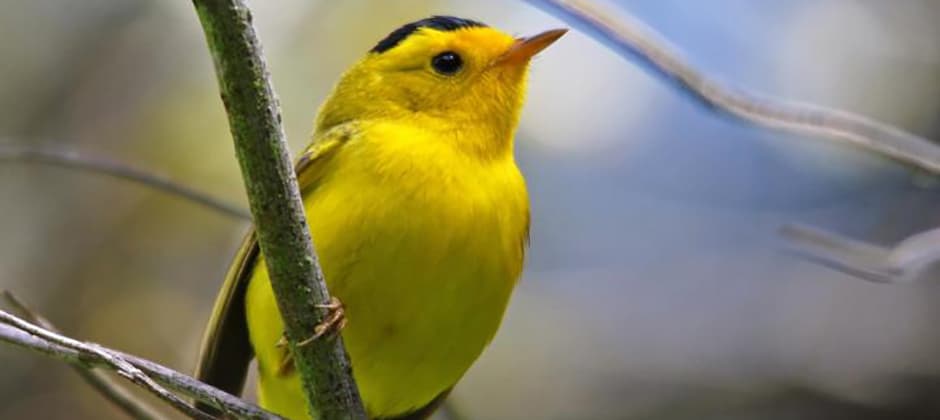Share this article
To quiet your mind, listen to the birds
Hearing birds singing, and sometimes perceiving high biodiversity, may increase people’s well-being.
Past research had looked at human connections to nature in artificial lab settings or conducting internet surveys about people’s thoughts on nature. Other research has considered overall experience in nature, but didn’t focus on any particular senses. In a recent study, published in Proceedings of the Royal Society B, researchers looked particularly at how hikers in Boulder Open Space and Mountain Parks in Colorado responded to birdsongs they heard.
“I think any way that we can try to demonstrate the human benefits of conservation efforts or open spaces like this is a win for conservation,” said Clinton Francis, an associate professor at California Polytechnic State University and an author on the study led by graduate student Danielle Ferraro.
“We picked birdsong because there’s an interesting history of surveys that have shown people who experience birdsong may report higher levels of well-being,” Francis said. His team wanted to see if that could be shown in an experimental context, and if hikers might be able to sense changes in biodiversity when they heard the songs.
To conduct the study, Francis and his colleagues chose two trails in Boulder Open Space Mountain Parks, where staff members had a keen interest in trying to understand factors contributing to positive experiences on their lands.
Along each trail, the team hid speakers that played birdsongs. They made sure to make the sounds as realistic as possible by putting speakers playing certain birdsongs where they would usually be heard. Spotted towhee (Pipilo maculatus) recordings were played in Gambel oak scrub, where the birds are usually found. House finch songs (Haemorhous mexicanus) were played farther uphill in pines. Luckily, no avid birdwatchers came across the speakers.
The team conducted the experiment at the end of breeding season so they playbacks wouldn’t interfere with breeding birds.
“We re-created acoustic conditions visitors would experience a month or six weeks earlier in the season when birds really engaged in those types of behaviors,” Francis said. “That allowed us two things: not to mess with the actual birds there, but also to allow us to contrast acoustic conditions that are relatively quiet compared to when the playback was actually happening.”
They exposed visitors on the two trails to the playback for a week at a time. While one was broadcasting the bird sounds, the other was off. They conducted the experiment for a little over two months.
As people passed through the areas, the researchers interviewed them, asking questions about their perceptions of biodiversity as well as their sense of well-being.
Francis and his colleagues found that on both trails, when the recording was on, people had higher levels of well-being. On one trail, people perceived more biodiversity when they heard the songs, but on the other trail they didn’t. Francis thinks that may be because that trail had tougher terrain, which may have required more concentration for hikers.
But the fact that both trails resulted in better well-being in people is important, he said. “We timed exposure to the trail sections between seven and 10 minutes, and that we were able see these effects of short-term exposure is really amazing to me,” he said. “It prompts a lot more interesting questions, like what happens after an hour?”
Francis said this can have implications for conservation. “Only a subset of the populace really cares deeply and is willing to invest time and money and energy into birds for birds’ sake and for other wildlife,” he said. “Demonstrate nature’s benefits to people — that we’re getting something back from nature — is an important component to emphasizing the importance of places for the general population and policymakers.”
Some people think the results mean that people can just record birdsongs to help with their well-being, Francis said, but that probably isn’t the same as being out in nature. “Experiences in nature have larger effects on well-being than do imitations, even in our best replicates of virtual realities,” he said.
Further, he said, it’s not just about people. “There are reasons outside of well-being to preserve these species and wild places.”
The research also shows the importance of sound and sound pollution for wildlife and people. Many of these parks are surrounded by urban areas, Francis said. “Local city parks provide opportunities to hear natural sounds and experience nature, surrounded by urban areas that create noise,” he said. “One challenge is essentially to preserve these soundscapes in natural areas when they often don’t have control of conditions outside of these parks. That’s something a lot of these areas need to consider, both for the wildlife perspective but also for people.”
Header Image: The Wilson’s warbler (Cardellina pusilla) is one of the birds whose songs was recorded and played back to hikers, improving their sense of well-being. Credit: Dave Keeling








